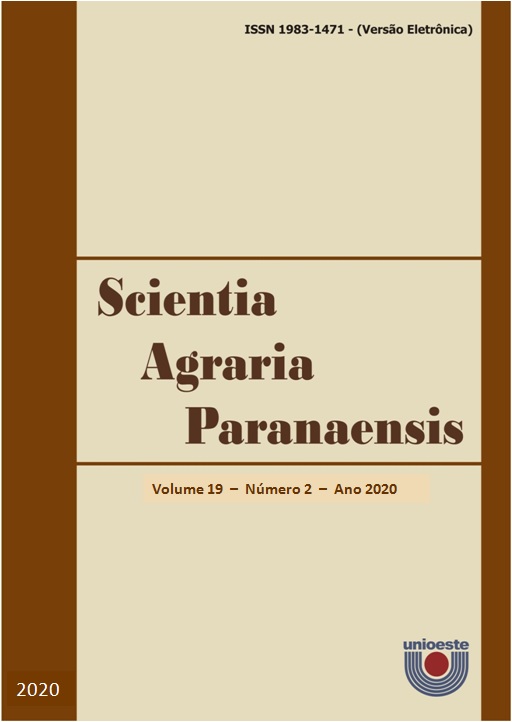Substrates on germinative seed processes in Tabebuia roseo-alba (Ridl.) Sandwith) And Tabebuia serratifolia (Vahl) G. Nicholson
DOI:
https://doi.org/10.18188/sap.v19i2.23422
Agências de fomento
Resumo
Among the constituents of Brazilian flora, the ipes, belonging to the Bignoneaceae family, occur widely, and therefore do not occupy a single habitat. This group species has various values, including economic, ornamental and medicinal. The objective of this work was to evaluate the effect of various substrates on the seed germination process of Tabebuia roseo-alba (Ridl.) Sandwith) (ipê rosa) and T. serratifolia (Vahl) G. Nicholson (ipê amarelo). The experiment was carried out with BOD type germinators, adjusted to a constant temperature of 30ºC, with a photoperiod of twelve hours daily. The seeds were distributed in transparent acrylic boxes (Gerbox) and conditioned under the substrates: carbonized rice husk (CRH), commercial substrate (CS) Bioflora, washed sand (WS) and vermiculite (V). The treatments were distributed in a 2 x 5 factorial scheme (two species and five substrates), with four replications. At 30 days, the final percentage of emergence (% E) or the total percentage of seeds emerged up to 30 days after sowing was calculated. In general, T. serratifolia seeds showed relatively higher values of emergence percentage and emergence speed. The treatment containing 100% commercial substrate showed the best results for both species in terms of percentage and emergence speed, however it can be inferred that the washed sand substrate showed similar values for the yellow ipê under the tested conditions.Downloads
Arquivos adicionais
Publicado
16-07-2020
Como Citar
SILVA, R. C. da; AGUIAR, B. A. C.; GOMES, T. B. A.; SANTOS, B. M. M.; FONSECA, E. F.; SOUZA, P. B. de. Substrates on germinative seed processes in Tabebuia roseo-alba (Ridl.) Sandwith) And Tabebuia serratifolia (Vahl) G. Nicholson. Scientia Agraria Paranaensis, [S. l.], v. 19, n. 2, p. 200–203, 2020. DOI: 10.18188/sap.v19i2.23422. Disponível em: https://saber.unioeste.br/index.php/scientiaagraria/article/view/23422. Acesso em: 24 dez. 2025.
Edição
Seção
Nota Científica
Licença
Aviso de Direito Autoral Creative Commons
Política para Periódicos de Acesso Livre
Autores que publicam nesta revista concordam com os seguintes termos:
1. Autores mantém os direitos autorais e concedem à revista o direito de primeira publicação, com o trabalho simultaneamente licenciado sob a Licença Creative Commons Attribution que permite o compartilhamento do trabalho com reconhecimento da autoria e publicação inicial nesta revista.2. Autores têm autorização para assumir contratos adicionais separadamente, para distribuição não-exclusiva da versão do trabalho publicada nesta revista (ex.: publicar em repositório institucional ou como capítulo de livro), com reconhecimento de autoria e publicação inicial nesta revista.
3. Autores têm permissão e são estimulados a publicar e distribuir seu trabalho online (ex.: em repositórios institucionais ou na sua página pessoal) a qualquer ponto antes ou durante o processo editorial, já que isso pode gerar alterações produtivas, bem como aumentar o impacto e a citação do trabalho publicado (Veja O Efeito do Acesso Livre).
Licença Creative Commons
Esta obra está licenciada com uma Licença Creative Commons Atribuição-NãoComercial-CompartilhaIgual 4.0 Internacional, o que permite compartilhar, copiar, distribuir, exibir, reproduzir, a totalidade ou partes desde que não tenha objetivo comercial e sejam citados os autores e a fonte.


